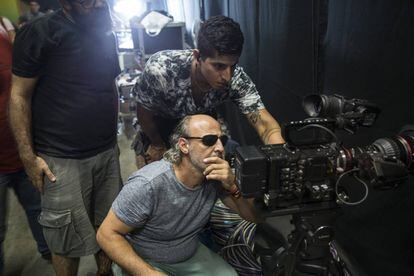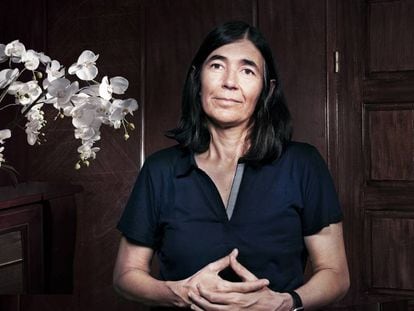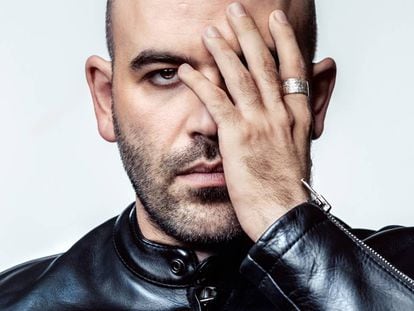Buenos Aires: Disney’s ‘kids TV’ factory
The Argentinian capital is churning out vast numbers of Children’s TV productions watched worldwide with shows like ‘I’m Luna’ to be translated into 15 languages and shown in 150 countries
The set of I’m Luna is thick with Argentinian accents and expressions particular to this part of the world. But when the cameras roll in the enormous studios in the suburbs of Buenos Aires, all traces of provincialism are eradicated and millions of children in 150 countries speaking 15 different languages will be able to identify with the star of the show, played by Mexican actress Karol Sevilla.
Sevilla has been living in Buenos Aires for the past two years to play the part of Luna, a teenager whose life revolves around singing and skating. She started shooting when she was 15 and is now 17, but her fan base is much younger. “These are aspirational series,” says Cecilia Mendonça, vice president of the Disney Channels Latin America. “The viewers are at an in-between period of their lives – they’re pre-adolescents. They are growing but they’re still children. Younger children always watch their older siblings. The content is healthy, but it’s not traditional. There’s drama, so it’s more sophisticated. And it forges an emotional connection to the show.”

Argentina has become Disney’s favorite location for shooting this kind of series: Floricienta, Violetta, I’m Luna – all were made here. It’s no coincidence, of course. It’s practically the birthplace of the genre. Cris Morena started the trend in the 1990s with the show Chiquititas, combining songs with simple story lines. Soon a school of actors developed – Morena even had 50 Brazilian families come to Buenos Aires to film a Brazilian version. And it achieved success beyond her wildest dreams, going global. Subsequently, she hit the jackpot again with Rebelde Way. Which is where Disney came in, guaranteeing an audience of millions. Now Disney calls the shots in the children’s TV series business in Argentina.
“The key is to create universal storylines,” says Morena sitting in her oriental-style office in the suburbs of Buenos Aires where she has her production company. “It’s like asking, ‘Why is Cinderella successful?’ All children want to be loved by their parents and recognized, to make friends, be naughty and see their dreams come true. I’m talking about taking a project and turning it into a record, a book, merchandise, a stage play, a musical, a band, a film. We sent Chiquititas out into the world in all its guises.”
When Morena started the genre, she had plenty of talent to work with. Argentina is bursting at the seams with actors, scriptwriters, directors and publicists. In Buenos Aires alone, 28,000 people are working in the audiovisual industry. That’s 2% of the city.
In Latin America, 35 million children are hooked on I’m Luna, but it’s also massively popular in Spain, Germany and Poland. “She’s very pretty and very nice,” says eight-year-old Lucía López from Madrid. “Her accent is strange but I don’t care. I like it when she sings and skates. She had to leave Mexico but she goes to a good school in Argentina and she has a lot of friends.”
I don’t want to be eaten up by fame so I ignore it ‘I’m Luna’ star Karol Sevilla
“It’s made to be seen all over the world,” says Jorge Nisco, the director of I’m Luna and co-director of Violetta. “It is broadcast in Africa, Europe and Arabic countries. I get mails from Angolan kids who want to work on the show.”
Karol, the show’s star, has difficulty walking down the street these days in almost any of the 150 countries where the series is watched. On her YouTube channel alone, she has 3 million followers who listen avidly to her speaking about her life. Now she’s getting ready to fill stadiums across the world like her predecessor Tini Stoessel, the Argentinian star of Violetta. Violetta is the biggest children’s blockbuster to have come out of Argentina so far.
“I don’t want to be eaten up by fame so I ignore it,” says the Mexican with her perpetual smile. Her mother watches her every move. They’re about to find out what it’s like to be mobbed by little girls in countries such as Italy, France and Israel. It’s what happened to Stoessel. “We were in Rome and she couldn’t walk. She was stopped everywhere,” recalls Tini’s uncle Rodolfo Stoessel, a producer of children’s TV, who seems both proud and surprised by the extent of his niece’s popularity. “The Italian kids learned Spanish so they could sing her songs and I get messages every day from Eastern Europe where they make a huge effort to write in Spanish so they can speak to Tini.” Almost one million tickets were sold on her 2014 world tour.

Disney makes sure each series reaches the biggest global audience possible. “We avoid doing or saying anything local and we use expressions that can be understood everywhere,” says Jesica Lefkovics, who explains that though they don’t get rid of the accents completely, they tone them down. “And if the character is on a bike, they have to wear a helmet,” says Nisco – not something most Argentinians would think to do, but Disney ensures this is the case.
Even the skates, which are central to the story lines, got special consideration. Initially, they were to be ice skates, which are common in the US. But Disney pointed out that ice skates are not that common in other countries, so they changed them for four-wheeler roller skates. Parents of little girls everywhere know about them. Costing around €60, Luna’s skates were the most popular gift in Spain last Christmas with 40,000 pairs sold. The sale of I’m Luna merchandise, including backpacks, pencil cases, folders and books, is big business.
With Argentina, we are looking for something profitable, that falls within our budget without sacrificing quality Cecilia Mendonça, vice president, Disney Channels Latin America
So why Argentina? “We are looking for something profitable, that falls within our budget without sacrificing quality,” says Mendonça.
The directors who work with Polka, a local production company, highlight the Argentinian capacity for improvisation, essential for such a complicated series that has 80 episodes per season. “Basically, it’s fresh; we like it and the public gets it,” says Sebastián Pivotto, co-director of Violetta. His colleague Nisco adds, “The Yanks invented Coca-Cola. If we didn’t exactly invent this kind of series, we have perfected it. Don’t ask me why, but they always work.”

English version by Heather Galloway.


